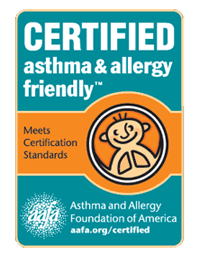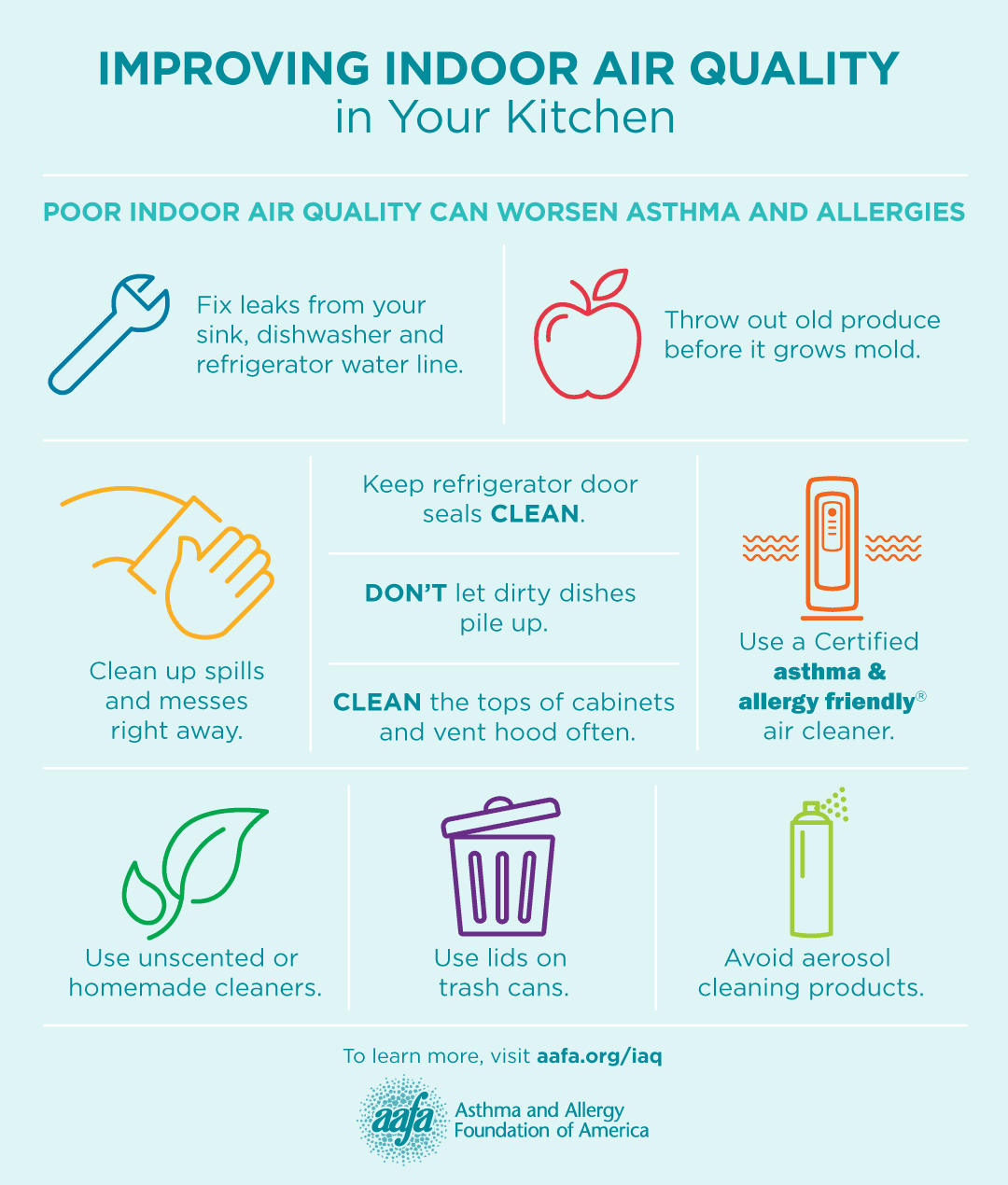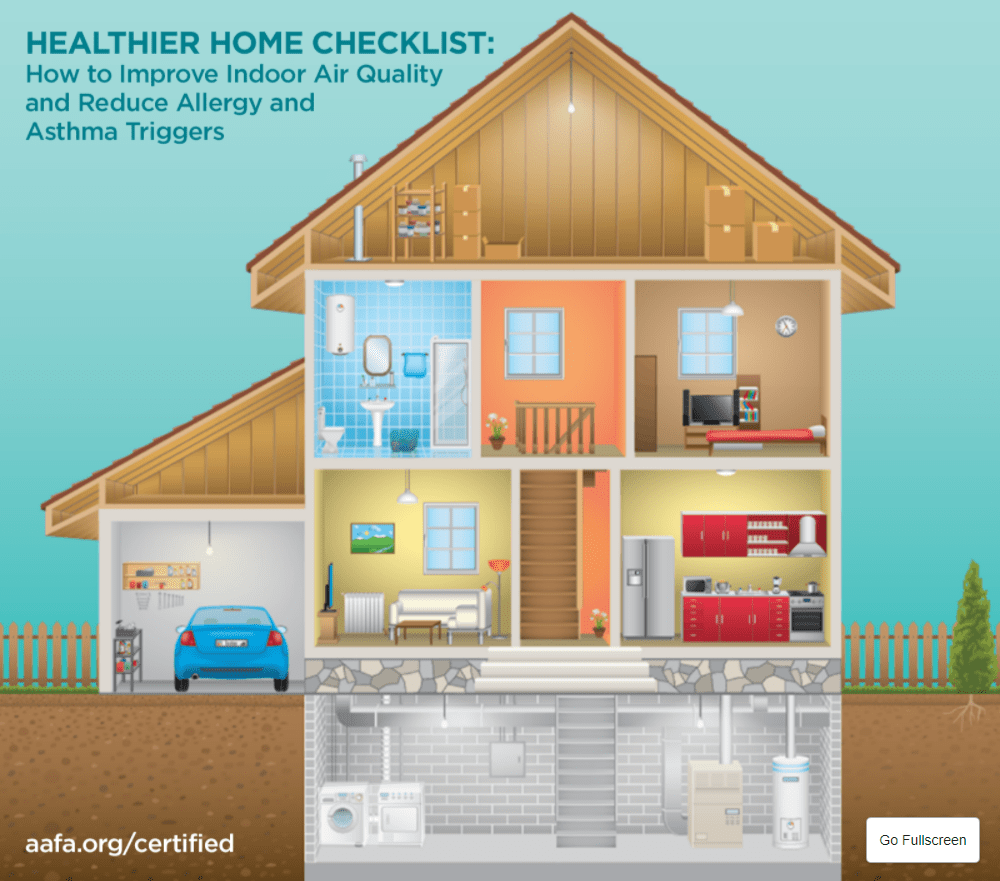Healthy indoor air quality is an important part of managing your asthma and allergies. Here are some tips for improving the air quality in the bedroom and living room. But did you know the air quality of your kitchen is important too?
Improve Your Kitchen’s Environment
If your living room and kitchen are together in one large space, the air in each area affects the other. But each area has different air quality issues to fix in order to improve the air in all rooms.
Reduce Pests and Mold
The kitchen is a common place to find allergens like mold and pests. These are allergens that can affect you all year long. Mold is a fungus that releases spores through the air. Inhaling the spores can cause allergy or asthma symptoms. Mold loves produce, plants, and damp areas like sinks and dishwashers.
Cockroaches love damp areas too. They love food even more. Dead or alive, their body parts, saliva, and waste are all allergens. Studies show children who are allergic to cockroaches, and are exposed to them, need to go to the hospital for asthma more often than other children with asthma.1
Here are some ways you can reduce allergens and triggers in your kitchen:
- Fix leaks from your sink, dishwasher, and water line from your refrigerator as soon as possible.
- When buying produce, wash it before you put it away. Throw out produce before it grows mold, and clean the bins of your refrigerator often.
- Mold likes to grow on refrigerator door seals. Clean them often.
- Don’t leave sources of water and food out at night for cockroaches. Remember to put away your pet’s dishes too.
- Store food in airtight containers, and keep lids on your trash cans.
- Clean up spills right away.
- Don’t let dirty dishes pile up on the counter or in your sink.
- Use roach baits instead of sprays to control cockroaches. If you use a pest control company, hire one that uses integrated pest management (IPM) methods.
- Wipe down the tops of your cabinets and vent hood often with warm, soapy water. These areas are often overlooked.
- Wash throw rugs weekly in 130 F water.
- If you have house plants or potted herbs, only water them when the soil is dry. Here are some other ways to prevent mold in houseplants:
- Plant them in sterile soil
- Give them more light
- Use a fan to circulate air around the plant
- Trim dead leaves often
Reduce Scents and Chemicals
Many of us store our cleaning supplies in the kitchen. We also want to our kitchen to be the cleanest room in the house. Chemicals from cleaning products can trigger asthma symptoms. There are ways to keep your kitchen clean without using products with harsh smells.
- Wear a mask when cleaning or have someone without asthma clean.
- Use unscented cleaners or make your own cleaners. Soap and water, as well as vinegar, are effective, natural cleaners.
- Avoid aerosols which can contain volatile organic compounds (VOCs).
- Clean up messes when they happen to reduce your need for cleaning products.
- Clean the vent/filter on your range hood, or install an exhaust fan in your kitchen that vents to the outside.
- When it's time to replace your stove or cooktop, choose electric instead of gas.
- If you have an open living room and kitchen, get a CERTIFIED asthma & allergy friendly® air cleaner large enough for both rooms.
Better indoor air quality can make a big difference in your asthma and allergy symptoms. But controlling your indoor air needs to be part of a full treatment plan. See a board-certified allergist to help you find the plan that works best for you.
Published October 2017. Updated October 2021.
 Many products promise to help control allergens but not all of them do. When you are shopping for products for your home, look for the CERTIFIED asthma & allergy friendly® mark. It indicates the product has passed our testing standards to help you have a healthier home.
Many products promise to help control allergens but not all of them do. When you are shopping for products for your home, look for the CERTIFIED asthma & allergy friendly® mark. It indicates the product has passed our testing standards to help you have a healthier home.Visit aafa.org/certified to search for CERTIFIED products. There you can also learn more about the asthma & allergy friendly® Certification Program.
References
1. Rabito, F., Carlson, J., He, H., Werthmann, D., & Schal, C. (2017). A single intervention for cockroach control reduces cockroach exposure and asthma morbidity in children. Retrieved 15 September 2017



Comments (0)